💪 Support independent web, support us:
There are great many landmarks in Europe, and so are in Vietnam.
Vietnam is rich in history and culture, with its landmarks serving as testaments to its past, present, and future.
From the iconic limestone cliffs of Ha Long Bay to the imperial city of Hue, these distinct landmarks embody the essence of Vietnam – brimming with beauty, resilience, and strength.
Each landmark carries with it a unique story, connecting the present to the past, highlighting Vietnam’s pride, and reminding us of the many trials and triumphs that have shaped this remarkable country.
1. Ha Long Bay
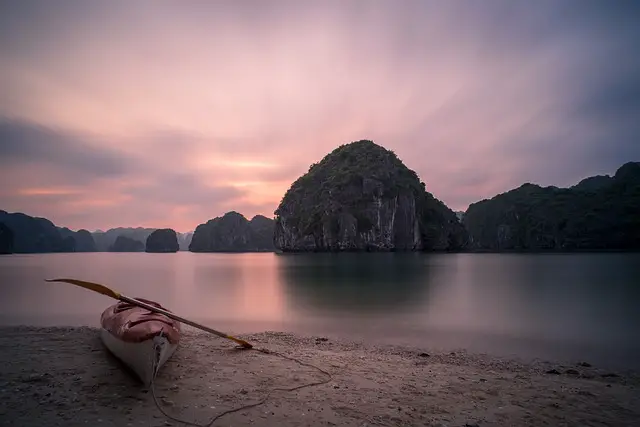
Ha Long Bay is a stunning UNESCO World Heritage Site located in the Gulf of Tonkin in northeastern Vietnam. It is known for its beautiful turquoise waters, towering limestone pillars, and numerous small islands and islets.
What to see or do: – Take a boat tour to explore the vast expanse of the bay and admire the incredible scenery.
Don’t miss: – Seeing the famous Stone Dog Island, a small island that looks like two dogs facing each other.
Insider travel tips: – Visit in the spring or fall for the best weather and fewer crowds.
2. Ho Chi Minh Mausoleum
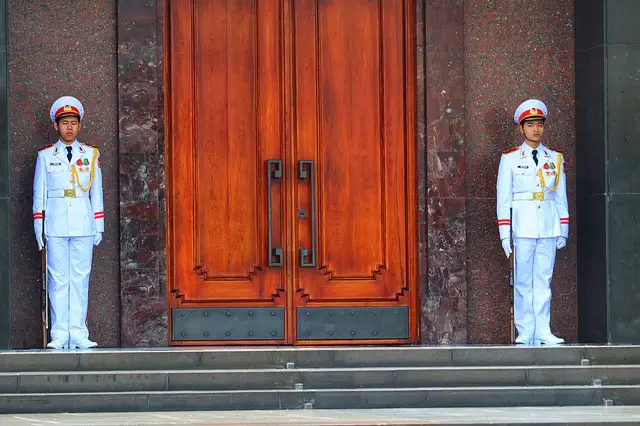
The Ho Chi Minh Mausoleum is a large memorial complex situated in Ba Dinh Square in Hanoi, Vietnam. It is the final resting place of the Vietnamese revolutionary leader Ho Chi Minh.
What to see or do: Visitors can pay their respects to Ho Chi Minh by viewing his embalmed body, which is preserved in a glass case within the mausoleum’s central hall.
The surrounding gardens, including the One Pillar Pagoda and the Presidential Palace, are also popular destinations for tourists.
Don’t miss: The changing of the guards ceremony, which takes place outside the mausoleum several times a day, is a fascinating spectacle not to be missed.
Insider travel tips: – Dress respectfully and be prepared to queue for up to several hours to enter the mausoleum during peak season.
3. Hoi An Ancient Town
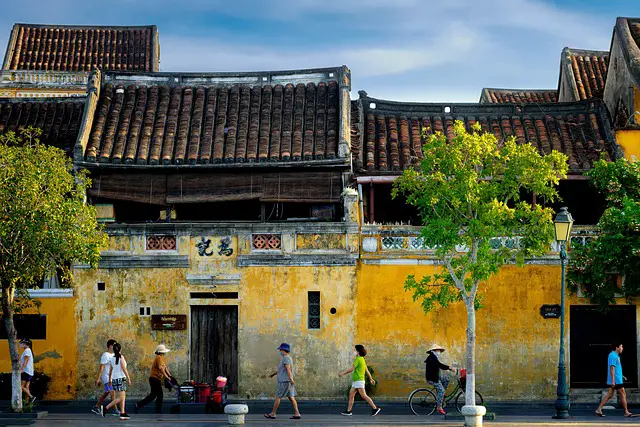
Hoi An is a well-preserved trading port dating back to the 15th century and recognized as a UNESCO World Heritage site.
What to see or do: Visit the Japanese Covered Bridge, an iconic symbol of Hoi An, and stroll along the lantern-lit streets. Admire the old Chinese shop houses and explore the many quirky cafes and shops.
Take a boat ride along the Thu Bon River, where you can see fishermen out at work.
Don’t miss: The Hoi An Night Market, where you can sample local street food and shop for souvenirs. Cooking classes and food tours are a great way to learn about the cuisine of the area.
Make sure to also catch a live performance at the Hoi An Traditional Art Performance Theatre.
Insider travel tips: The best time to visit Hoi An is during the dry season, from February to May. The town can get crowded, so aim to visit early in the day or in the evening.
Also, make sure to negotiate prices before purchasing anything in the market.
4. Cu Chi Tunnels
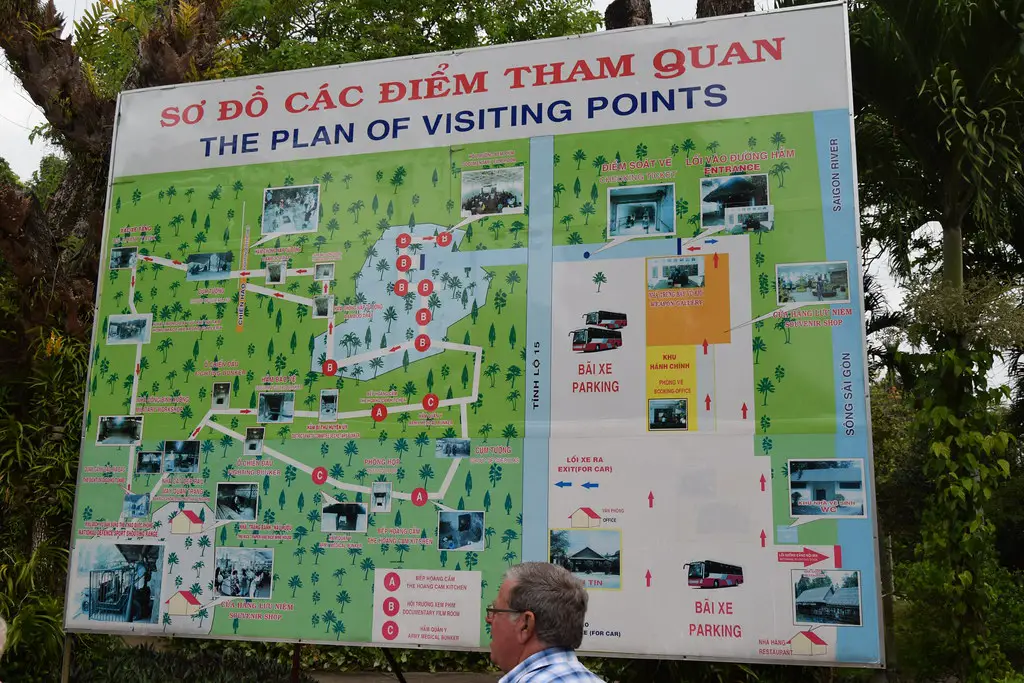
The Cu Chi Tunnels are a network of underground tunnels located in the Cu Chi district of Ho Chi Minh City, Vietnam.
What to see or do: Visitors can take a guided tour to explore the tunnels and learn about their historical significance during the Vietnam War. The tour includes demonstrations of the traps, bunkers, and other military equipment used by the Viet Cong fighters.
Don’t miss: Don’t miss the chance to crawl through the tunnels yourself and experience what life was like for the soldiers who lived and fought in them.
Insider travel tips: – Wear comfortable and lightweight clothing, as it can get quite hot and humid in the tunnels.
5. Perfume Pagoda
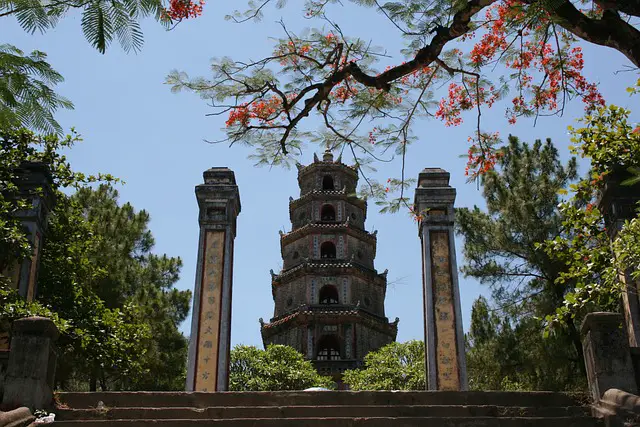
Perfume Pagoda is a complex of Buddhist temples and shrines located in Huong Son village, in Vietnam’s Hanoi province.
What to see or do: Visitors can take a boat ride along the Yen River and pass through stunning landscapes of rice fields, karst cliffs, and caves to reach the Perfume Pagoda.
Once there, you can explore the various temples nestled in the limestone cliffs, including the Huong Tich Cave temple, which is accessible only by boat or foot along a steep trail.
Don’t miss: One of the highlights of the Perfume Pagoda is climbing to the top of the mountain where the Huong Tich Cave is located.
From there, you can enjoy a stunning view of the surrounding countryside and take in the serene atmosphere.
Insider travel tips: The best time to visit Perfume Pagoda is during the Huong Pagoda Festival, which happens every year from the 6th day of the first lunar month to the end of the third lunar month.
It can get quite crowded during this time, so be sure to book your lodging in advance. Also, dress modestly and comfortably, as the hike to the top of the mountain can be quite steep and arduous.
Finally, it’s best to visit Perfume Pagoda as part of a day trip from Hanoi, which can be easily arranged through local tour operators.
6. Phong Nha-Ke Bang National Park
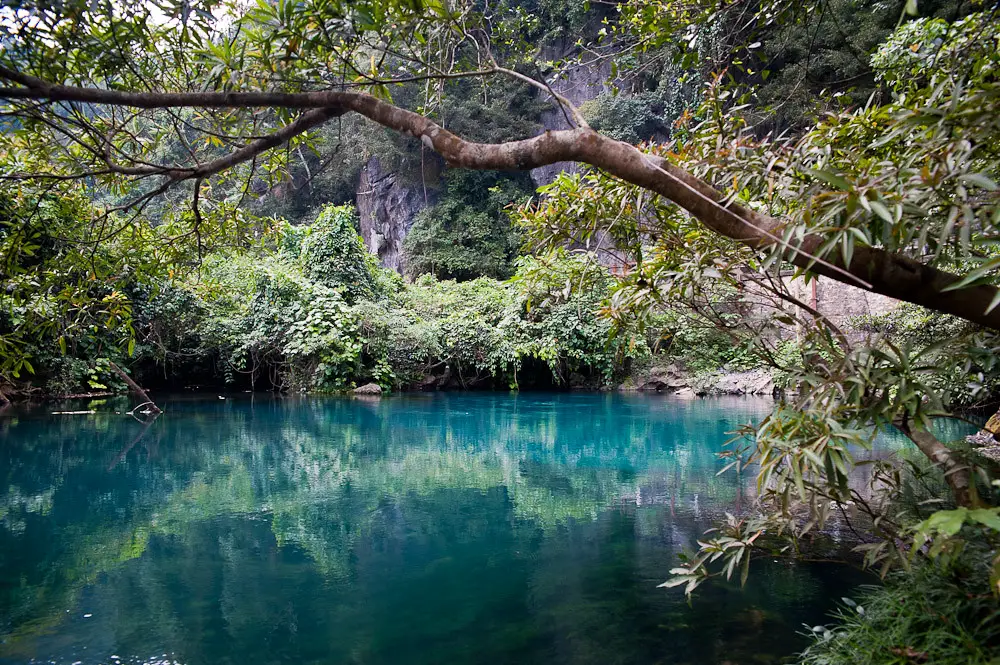
A UNESCO World Heritage site in central Vietnam, known for its stunning cave systems and karst mountains.
What to see or do: Take a boat ride on the underground river in Phong Nha Cave or explore the vast chambers in Hang Son Doong, the world’s largest known cave.
Trek through the jungle to discover the mysterious Tu Lan Cave system or hike through the mountainous terrain to reach the stunning viewpoints in the park.
Don’t miss: The incredible rock formations in the Paradise Cave and the impressive stalagmites in the En Cave.
Also, make sure to experience the beauty of the park by taking a peaceful bike ride through the rice fields or going on a swim in the park’s pristine natural pools.
Insider travel tips: Book a guide to explore the caves with, as they can provide valuable insight and help ensure your safety. Try to avoid visiting during the peak summer months, as the park can get crowded and hot.
Staying in the nearby town of Phong Nha can offer budget-friendly accommodation options and easy access to the park’s entrances.
7. My Son Sanctuary
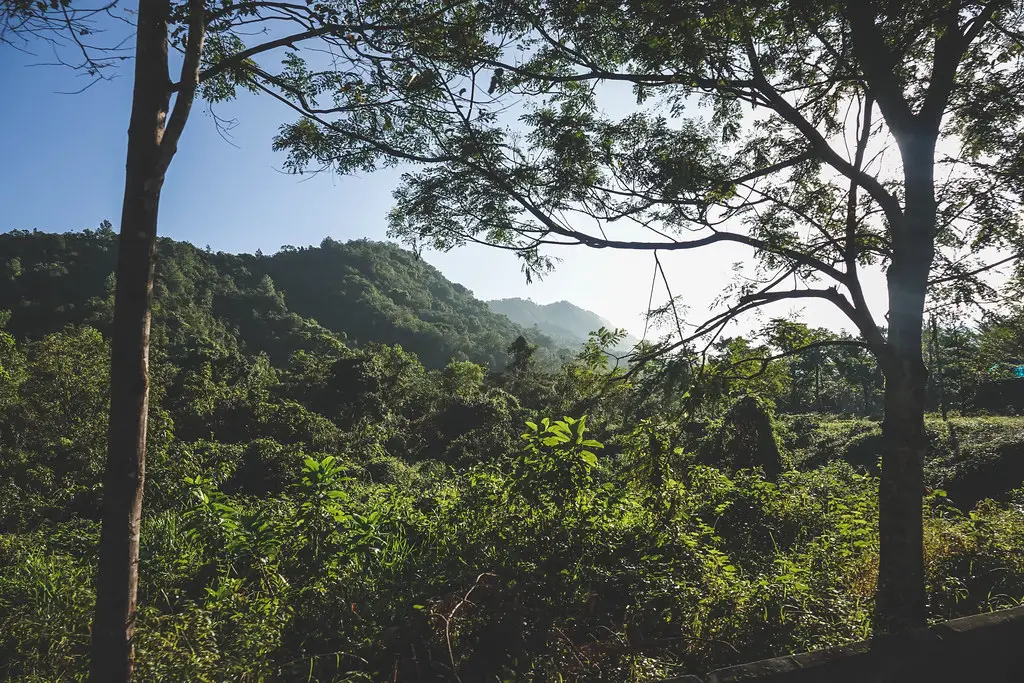
My Son Sanctuary is a Hindu temple complex located in central Vietnam.
What to see or do: Visitors can explore the ruins of over 70 temples and pagodas that were built between the 4th and 14th centuries. The complex is made up of several groups of temples, each with their own unique architecture and design.
Don’t miss: The main temple at My Son Sanctuary is the impressive Tower A, which stands at 24 meters tall and features intricate carvings and sculptures.
Also, make sure to catch one of the cultural performances that take place at the complex, which showcase traditional music and dance.
Insider travel tips: – To beat the crowds, try to arrive at the complex early in the morning.
8. Thien Mu Pagoda
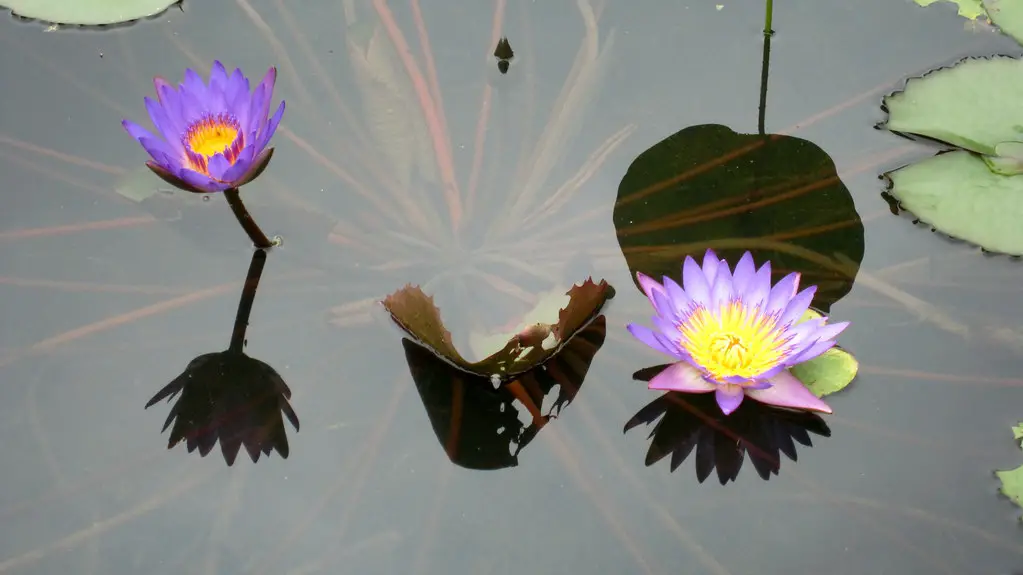
A historic Buddhist temple complex located on a hill overlooking the Perfume River in Hue, Vietnam.
What to see or do: Admire the stunning seven-story pagoda, explore the temple grounds, and enjoy the peaceful atmosphere.
Don’t miss: The beautiful gardens, the iconic bell tower, and the museum within the complex that showcases the history of the pagoda.
Insider travel tips: Dress modestly, arrive early to avoid crowds, and consider hiring a boat to take you to the pagoda for a unique experience.
9. Hoan Kiem Lake
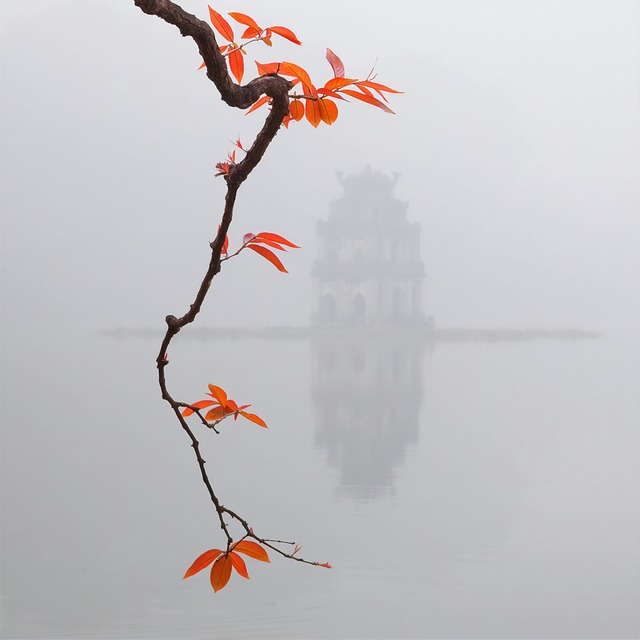
Hoan Kiem Lake is a cultural and historical symbol of Vietnam, as it has played a significant role in the country’s history and folklore.
The lake spans approximately 12 hectares and is surrounded by lush greenery, historic landmarks, and vibrant city streets.
What to see or do: Visitors to Hoan Kiem Lake can enjoy a leisurely stroll around the perimeter of the lake while admiring the numerous temples, monuments, and pagodas that dot the landscape.
A highlight of the lake is the iconic red Huc Bridge, which serves as a symbol of Hanoi.
Those interested in Vietnamese history can visit the Ngoc Son Temple, situated on an island in the middle of the lake, which houses various artifacts and relics from the past.
Don’t miss: Don’t miss out on the opportunity to see a rare and endangered species of turtles that inhabit the lake.
These turtles are considered sacred in Vietnamese culture and folklore and have long been a symbol of the unity and resilience of the Vietnamese people.
Insider travel tips: Visit Hoan Kiem Lake early in the morning or in the late afternoon to avoid the crowds and enjoy a peaceful and serene atmosphere.
Take your time to explore the various landmarks and stop at one of the many street food vendors that line the streets for a delicious and authentic Vietnamese snack.
Keep in mind that the area around the lake can be quite busy, so be cautious of your belongings and stay aware of your surroundings.
10. Imperial City Hue
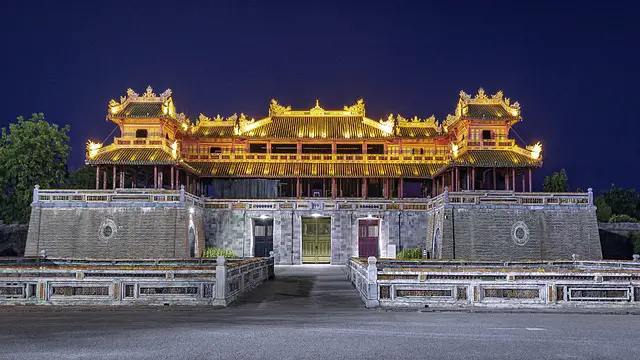
Imperial City Hue is a UNESCO World Heritage site, a walled palace located in the heart of Hue, Vietnam. It was built-in 1804 by Gia Long, the first Emperor of the Nguyen Dynasty.
What to see or do: Explore the magnificent architecture and historical significance of the palace, which was once home to Vietnamese royalty.
Admire the intricate details of the ornate temples, gardens, and courtyards, and learn about the political, cultural, and social context of the Nguyen Dynasty.
Don’t miss: Throne Hall, The Nine Dynastic Urns, Purple Forbidden City, Royal Theatre, and Tran Binh Dai.
Insider travel tips: – Wear comfortable walking shoes as the palace is massive.
11. Tam Coc-Bich Dong
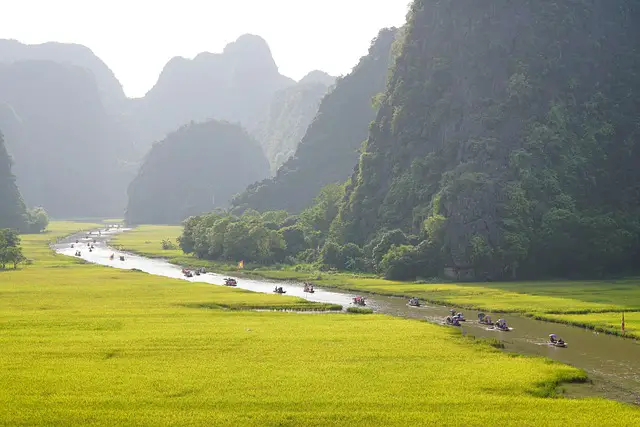
Scenic area in Ninh Binh province, Vietnam known for its natural beauty and cultural significance as a former imperial capital.
What to see or do: Take a Tam Coc boat ride along the river and past stunning limestone karst formations; visit Bich Dong Pagoda, a complex of three shrines built into a mountainside; see Hoa Lu Ancient Capital, the former center of political power in Vietnam; hike up one of the local mountains for panoramic views of the countryside.
Don’t miss: A sunrise or sunset boat ride in Tam Coc for the best lighting and optimal photo opportunities; exploring the nearby rural villages and meeting locals; sampling local delicacies like goat meat and goat hot pot.
Insider travel tips: Visit Tam Coc-Bich Dong in the shoulder seasons of spring or fall for fewer tourists and more comfortable temperatures; wear comfortable shoes for hiking and bring plenty of water; try bargaining with boat ride operators for the best deal.
12. Ba Be Lake
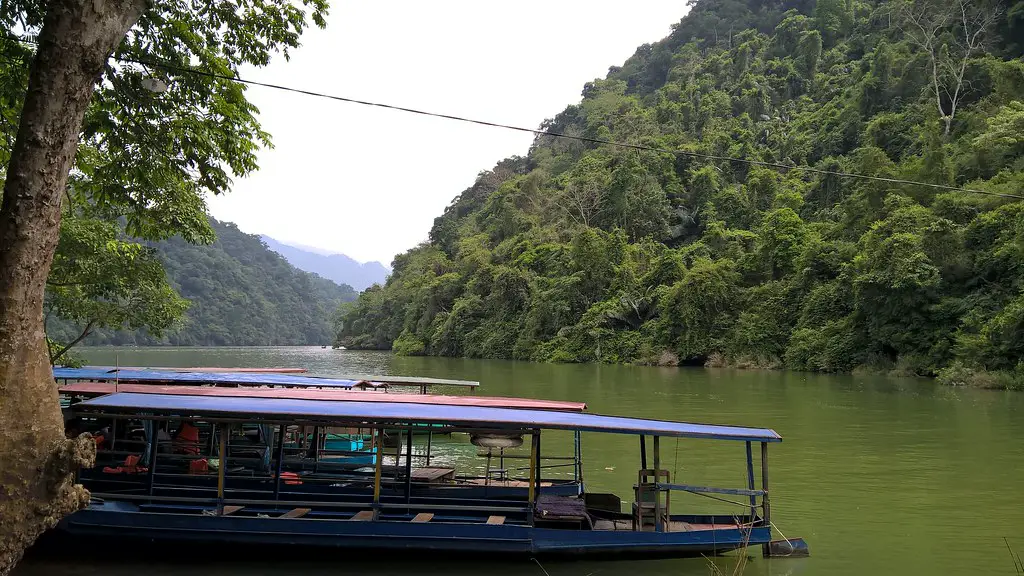
Ba Be Lake is the largest natural freshwater lake in Vietnam, located in the Ba Be National Park in Bac Kan Province.
What to see or do: Visitors can enjoy scenic boat rides on the lake, explore limestone caves, hike to waterfalls, and observe the daily life of local ethnic minority communities.
Many endemic species of flora and fauna can be found in the park, making it a paradise for nature lovers.
Don’t miss: The boat ride on the lake during sunset or in the early morning hours is a magical experience. The cascading Dau Dang Waterfall, Puong Cave, and Hua Ma Cave are also worth a visit for their natural beauty.
Insider travel tips: Stay with a local family to experience the traditional Tay way of life and try some delicious home-cooked meals. Trekking is one of the best ways to explore the park, but make sure to bring appropriate footwear and clothing.
Avoid visiting during the rainy season (May-September) as landslides and flooding may occur.
13. Ban Gioc Waterfall
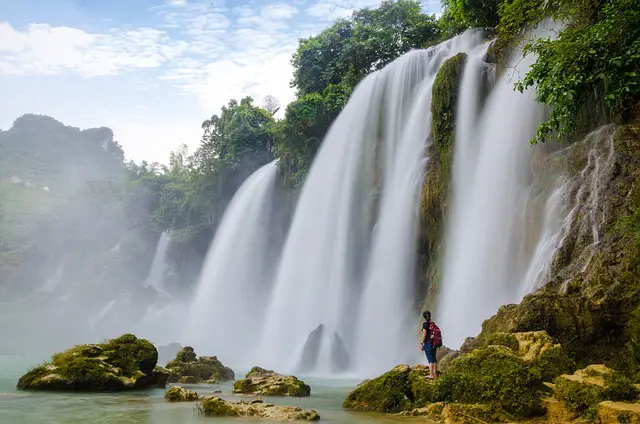
Ban Gioc Waterfall is a stunning natural wonder located in the northeastern province of Cao Bang, Vietnam. It is the largest and most impressive waterfall in Vietnam and sits right on the border with China.
What to see or do: Visitors can witness the breathtaking beauty of the waterfall, which consists of two tiers that fall from a height of over 30 meters.
The water cascades over the limestone cliffs and into a tranquil pool below, surrounded by lush greenery. Visitors can also take a boat ride along the river to fully appreciate the majesty of Ban Gioc.
Don’t miss: Don’t miss the chance to get up close to the waterfall and feel the refreshing mist on your face. Take a dip in the pool below the waterfall and get an invigorating massage from the powerful water flow.
Insider travel tips: – The best time to visit Ban Gioc Waterfall is during August and September when the water is at its fullest.
14. Dong Van Karst Plateau Geopark
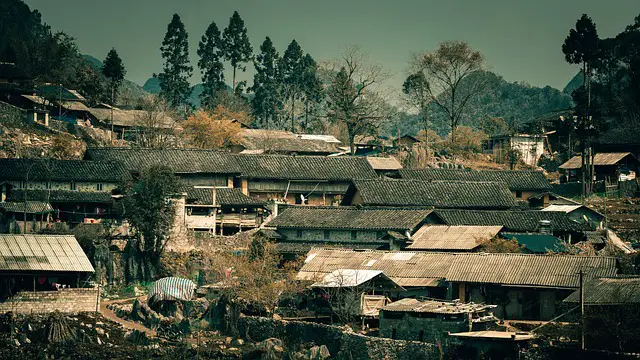
Dong Van Karst Plateau Geopark is a UNESCO-listed geopark located in northern Vietnam, known for its dramatic limestone mountains, rich cultural heritage, and unique biodiversity.
What to see or do: – Explore the stunning landscapes of Dong Van Karst Plateau, featuring unique geological formations, canyons, caves, and waterfalls.
Don’t miss: – Ma Pi Leng Pass, a scenic mountain pass with breathtaking views of the Nho Que River valley.
Insider travel tips: – The best time to visit Dong Van Karst Plateau is from September to November or from March to May, when the weather is mild and dry.
15. Cao Dai Holy See
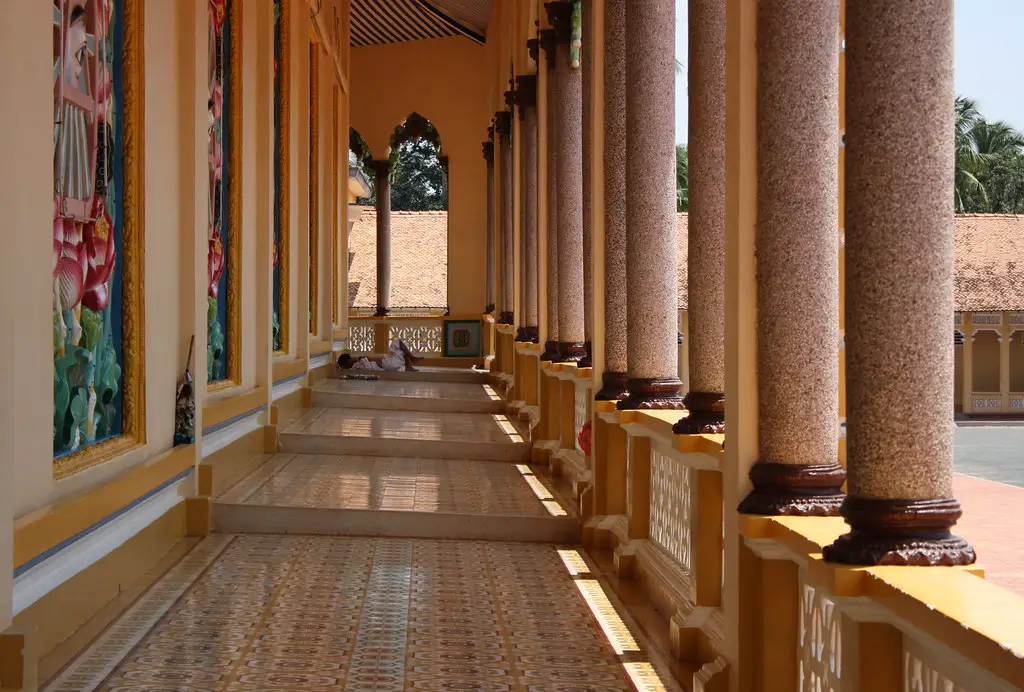
A temple complex and religious center for the Cao Dai religion in Vietnam.
What to see or do: Visit the colorful and intricate temple buildings, witness a prayer session, and learn more about the fascinating syncretic religion of Cao Dai which combines elements of Buddhism, Christianity, Taoism, Confucianism, and Islam.
Don’t miss: The daily midday ceremony where worshippers dressed in white robes process into the main hall accompanied by music and chanting.
Insider travel tips: Be respectful of the religious customs and dress appropriately. If you can, hire a local guide who can offer additional information and insights into the religion and its practices.
It’s also worth checking the temple’s schedule ahead of time to ensure you can witness a prayer session during your visit.
16. Son Doong Cave
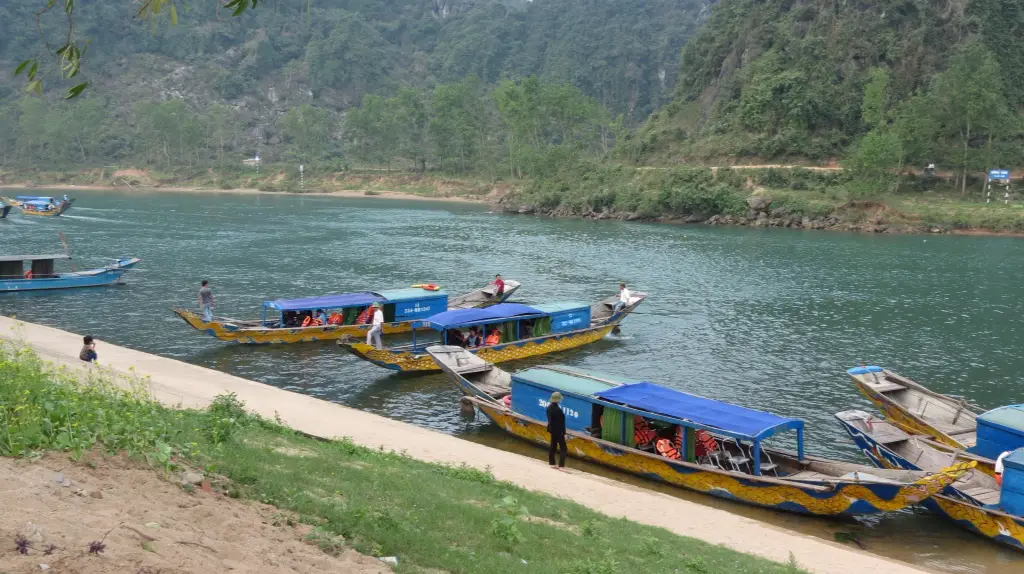
Son Doong Cave is the largest cave in the world, located in Phong Nha-Ke Bang National Park in central Vietnam.
What to see or do: The cave is a natural wonder and offers a breathtaking experience to visitors who are able to explore it. The tour includes trekking through the dense jungle, crossing rivers, and exploring the massive chambers of the cave.
Don’t miss: The highlight of the tour is reaching the enormous cavern called the “Great Wall of Vietnam,” with its stunning stalagmites and stalactites.
Visitors can also admire the “Hand of Dog” rock formation and swim in the underground river.
Insider travel tips: Book a tour well in advance, as visits are limited and subject to availability. Be sure to bring suitable hiking gear, including sturdy shoes, a waterproof jacket, and insect repellent.
Visitors should also be in good physical condition, as the trek can be challenging. Finally, make sure to pack a camera to capture the stunning natural beauty of Son Doong Cave.
17. Sa Pa Terraces
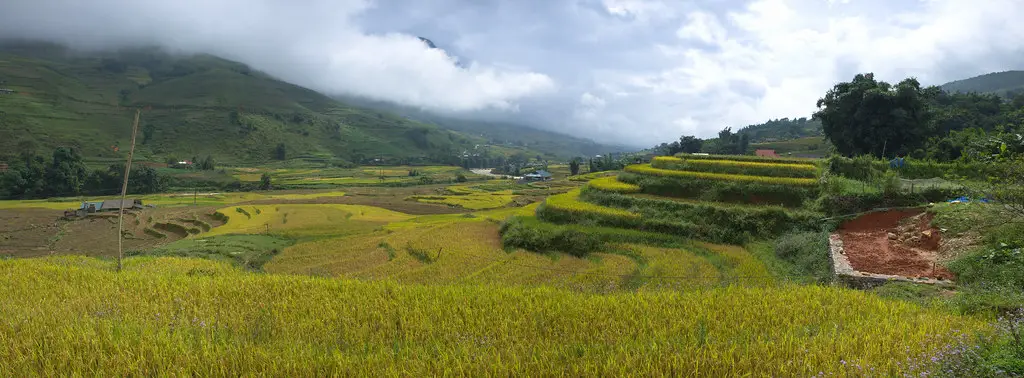
The Sa Pa Terraces are a series of rice fields and farming terraces located in the mountainous region of Northern Vietnam, near the Chinese border.
What to see or do: Visitors can take a guided or self-guided tour of the terraces and witness the stunning landscape of the rice paddies as they cascade down the steep hillsides.
The terraces can be visited year-round, but the best time to see them is during the planting and harvesting seasons.
Don’t miss: The most popular attraction is hiking through the terraces on one of the many trails, or taking a guided trek to nearby minority villages and learning about the local culture.
Another must-see is the nearby Silver Waterfall, which cascades down from a height of more than 200 feet.
Insider travel tips:
18. Ninh Binh
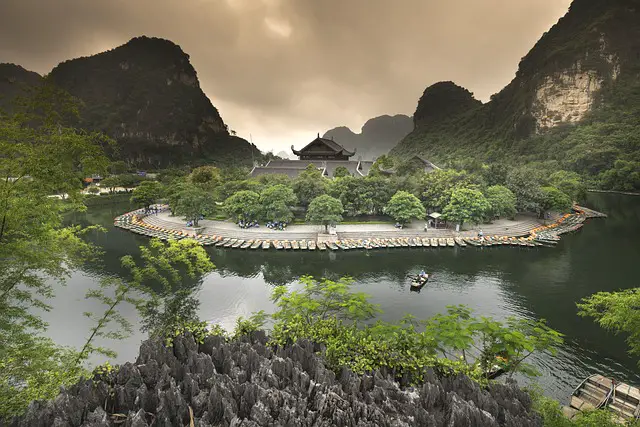
An up-and-coming destination located in northern Vietnam, known for its stunning natural beauty, including limestone karsts, winding rivers, and lush green countryside.
What to see or do:
Don’t miss: – Trang An Scenic Landscape Complex, a UNESCO World Heritage Site and one of the best places to see the stunning landscapes of Ninh Binh.
Insider travel tips: – Visit Ninh Binh during the dry season (from November to April) for the best weather conditions.
19. Mui Ne Sand Dunes
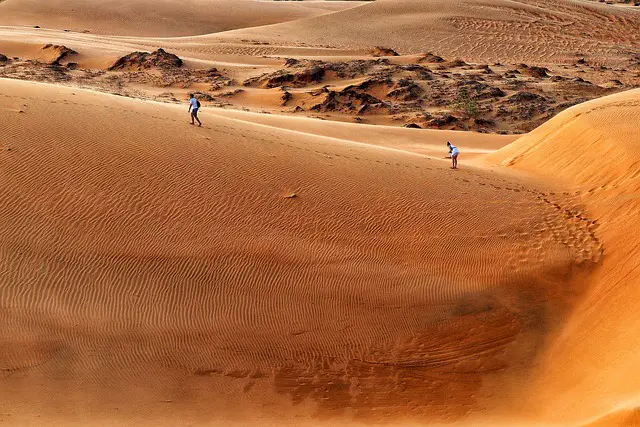
The Mui Ne Sand Dunes are a popular tourist destination located in the coastal town of Mui Ne in Vietnam.
What to see or do: Visitors can explore the breathtaking landscape of the sand dunes, which include both red and white sand. Activities such as sandboarding, ATV riding, and jeep tours are available for those seeking an adrenaline rush.
Visitors can also enjoy a peaceful sunrise or sunset over the dunes.
Don’t miss: Don’t miss the opportunity to capture stunning photographs of the unique and colorful landscape. The Fairy Stream, a shallow stream that flows through the red sand dunes, is also a popular attraction.
Insider travel tips: – Plan your visit to coincide with sunrise or sunset for the most stunning views.
20. Phu Quoc Island
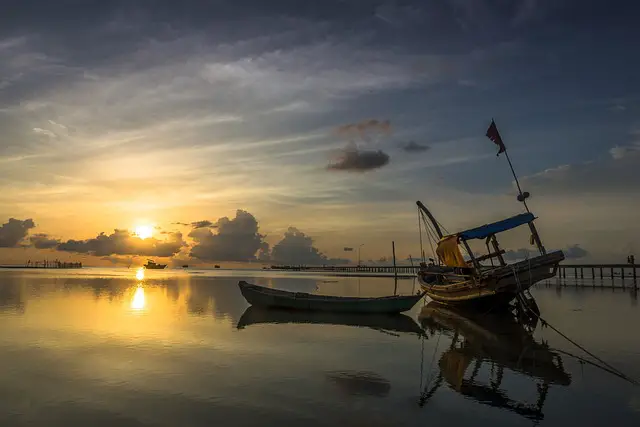
A beautiful island located in the Gulf of Thailand, off the southern coast of Vietnam.
What to see or do: – Relax on the stunning white sand beaches, such as Sao Beach and Long Beach.
Don’t miss: – The sunset at Dinh Cau temple is a must-see on this island.
Insider travel tips: – Visit off-season (May to October) to avoid crowds and get cheaper rates.
21. Hue Citadel
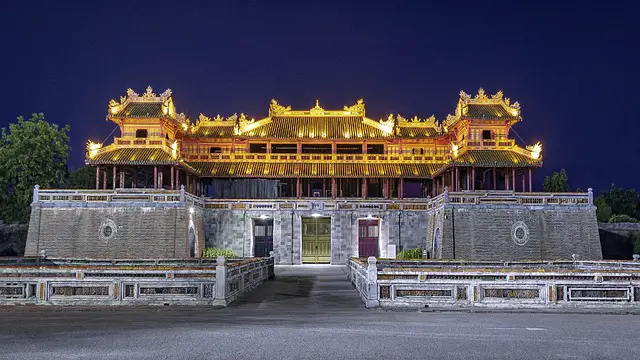
Historic walled complex in Hue, Vietnam, containing the former imperial city and the Forbidden Purple City.
What to see or do: Explore the many temples, palaces, and gardens within the citadel walls. Admire the intricate architecture and learn about the Nguyen dynasty.
Don’t miss:
Insider travel tips:
22. Cat Ba Island
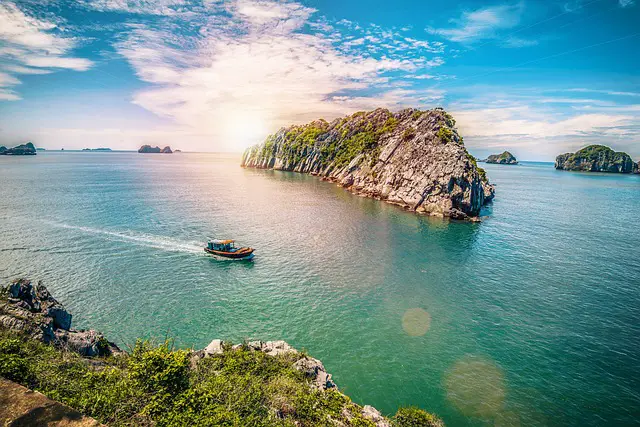
Cat Ba Island is the largest island in Halong Bay, located in northern Vietnam.
What to see or do: – Take a boat tour of Halong Bay and admire the stunning limestone cliffs and crystal clear waters.
Don’t miss:
Insider travel tips: – Avoid visiting Cat Ba during peak season (June-August) to avoid crowds and enjoy a more peaceful experience.
23. Lang Co Beach
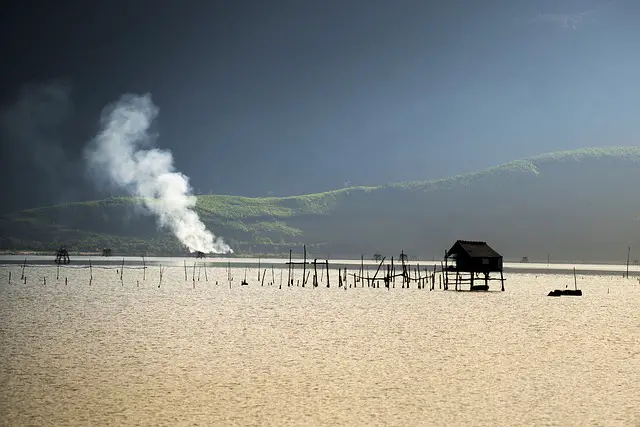
Lang Co Beach is a picturesque stretch of coastline with turquoise waters, golden sand, and lush green mountains serving as a backdrop.
What to see or do: Lang Co Beach is perfect for swimming, sunbathing, and taking leisurely walks along the shore. You can also go kayaking, fishing, or take a boat tour to explore the nearby islands.
If you’re feeling adventurous, there are many hiking trails to discover in the surrounding mountains.
Don’t miss: Make sure to explore the local seafood market and try some of the delicious dishes made from freshly caught seafood. You won’t want to miss the grilled fish, prawns, and crab; the local cuisine is truly something special!
Insider travel tips: The best time to visit Lang Co Beach is between March and September when the weather is warm and sunny. If you’re looking for seclusion, try visiting during the week when the beach is less crowded.
Also, be sure to bring plenty of sunscreen and drinks as there are not many vendors on the beach.
24. Vinh Moc Tunnels
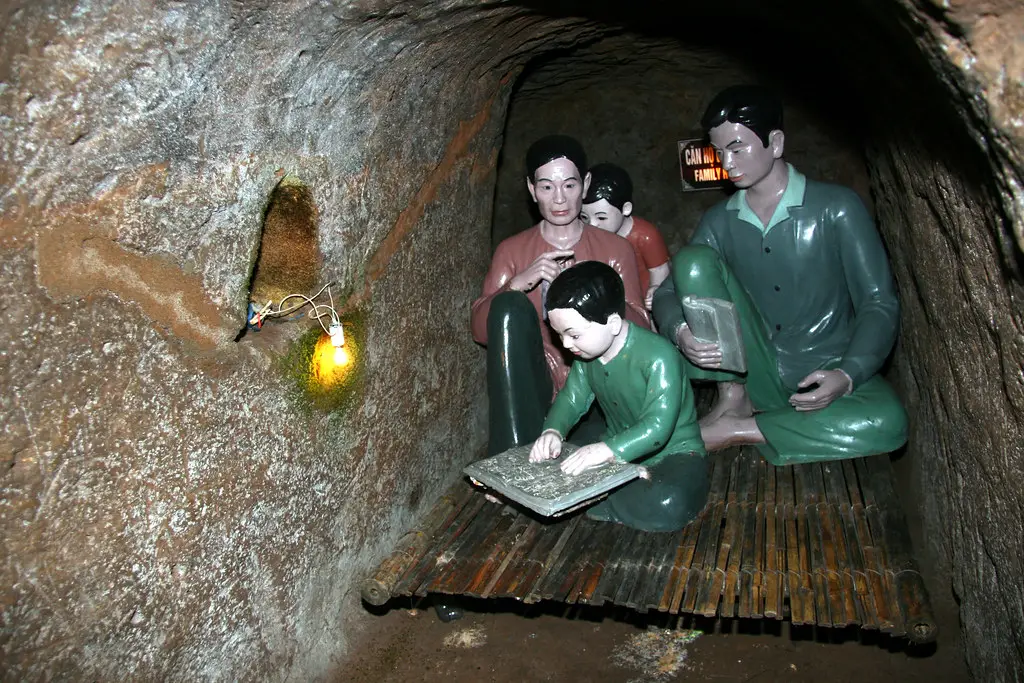
Vinh Moc Tunnels is a network of tunnels located in Quang Tri province, Vietnam.
What to see or do: Visitors can see the underground living quarters, hospitals, meeting rooms, and kitchens. There are also exhibits of weapons, tools, and photos depicting the life of the tunnel inhabitants during the Vietnam War.
Don’t miss: The chance to crawl through a section of the tunnels and experience what it was like for the Vietnamese soldiers and civilians who lived there.
Insider travel tips: – Wear comfortable and breathable clothing as it can get quite hot and humid in the tunnels.
25. Ha Giang Loop
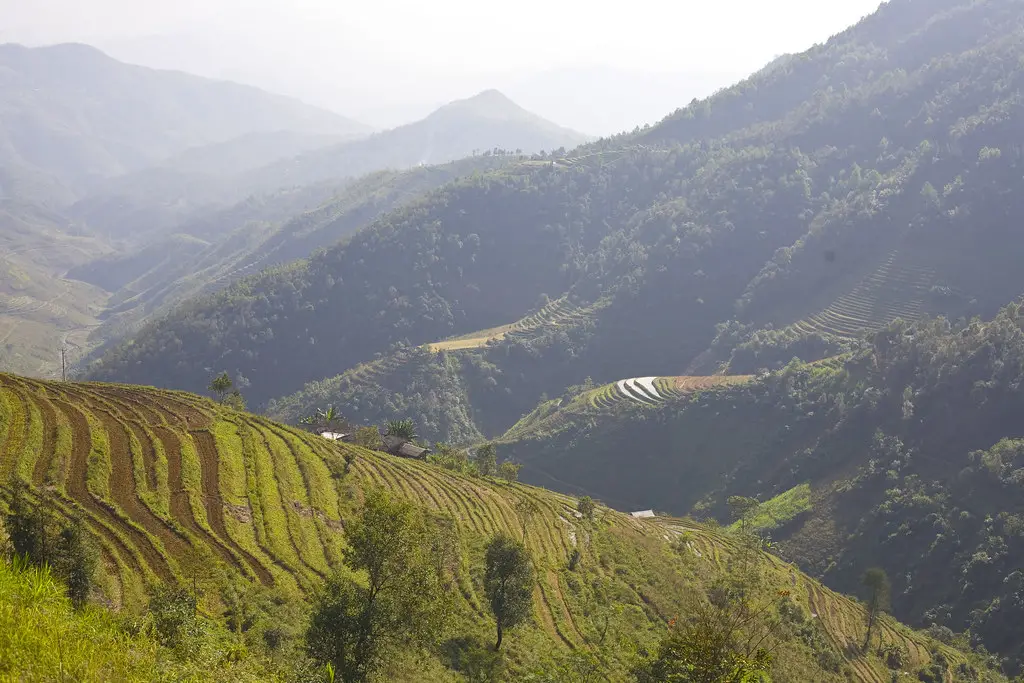
Ha Giang Loop is a 300-kilometer road trip in northern Vietnam known for its stunning scenic views of rice terraces, winding mountain roads, and ethnic minority villages.
What to see or do:
Don’t miss:
Insider travel tips: – The best time to visit Ha Giang is from September to November when the rice terraces turn golden yellow and the weather is cooler.
26. Con Dao Islands
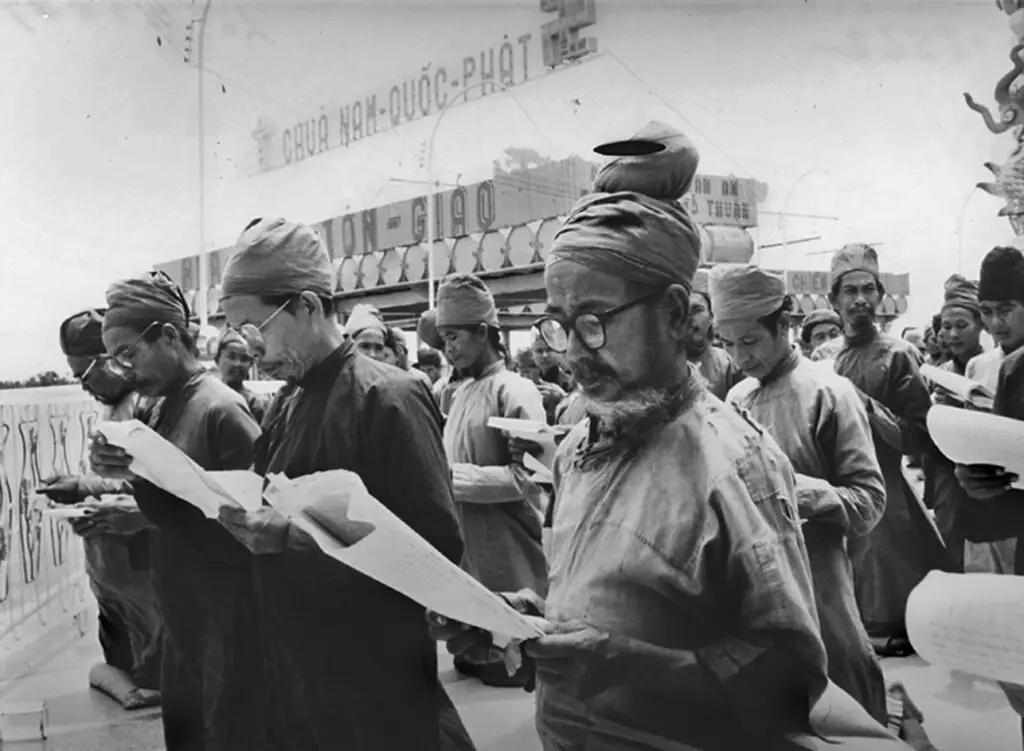
A group of 16 islands located off the southern coast of Vietnam.
What to see or do: Explore the untouched natural beauty of the islands with crystal-clear waters, white sand beaches, and lush tropical rainforests. Enjoy swimming, snorkeling, and scuba diving in the clear waters or take a hike in the forest to spot wildlife.
Don’t miss: Bay Canh Island for sea turtles, the Con Dao Museum for history buffs, and the Hang Duong Cemetery where thousands of Vietnamese soldiers were imprisoned and killed during the French colonial era.
Insider travel tips: Plan ahead and book accommodations early as options are limited. Hire a motorbike to explore the islands at your own pace, but beware of steep hills and rocky terrain.
Don’t forget to try the local seafood, especially the fresh lobster and squid.
27. Cuc Phuong National Park
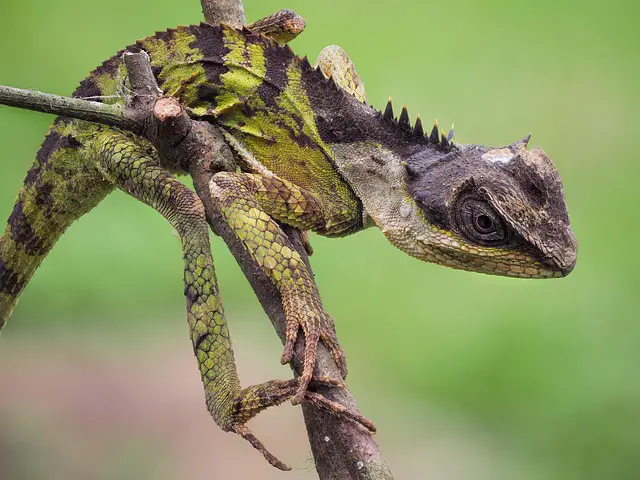
Cuc Phuong National Park is the oldest and largest national park in Vietnam, located in the Ninh Binh province.
What to see or do: – Go hiking along the various trails and immerse yourself in the lush greenery of the park.
Don’t miss: Don’t miss the chance to see the unique animals and plants found only in this part of Southeast Asia, particularly the rare Delacour Langur.
Insider travel tips: – Visit during the dry season (November to February) for the best weather and hiking conditions.
28. Hai Van Pass
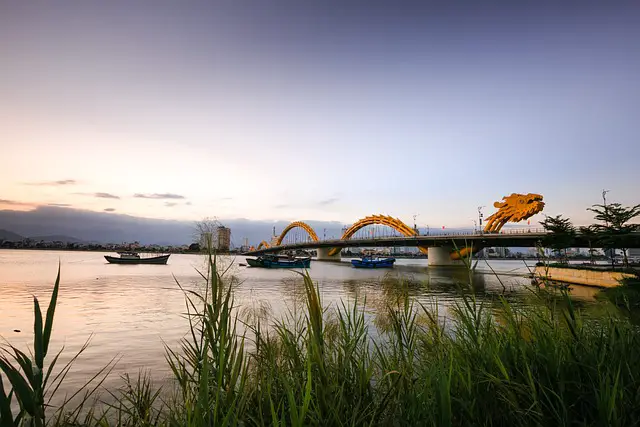
A scenic mountain pass connecting the cities of Da Nang and Hue in Central Vietnam.
What to see or do: Admire panoramic views of the coastline and lush green mountains, take stunning photos, and experience the thrill of driving or riding a motorbike along the winding road.
Don’t miss: The view from the top of the pass, which is a popular spot for taking photos and enjoying the scenery. Also, consider stopping at the ancient Hue Citadel, a UNESCO World Heritage site located nearby.
Insider travel tips: Be sure to bring a camera and wear comfortable clothing and sturdy shoes. If you’re driving a motorbike, be cautious of the narrow roads and sharp turns.
The best time to visit is during the dry season from January to August, when the weather is sunny and clear with blue skies.
29. Binh Tay Market
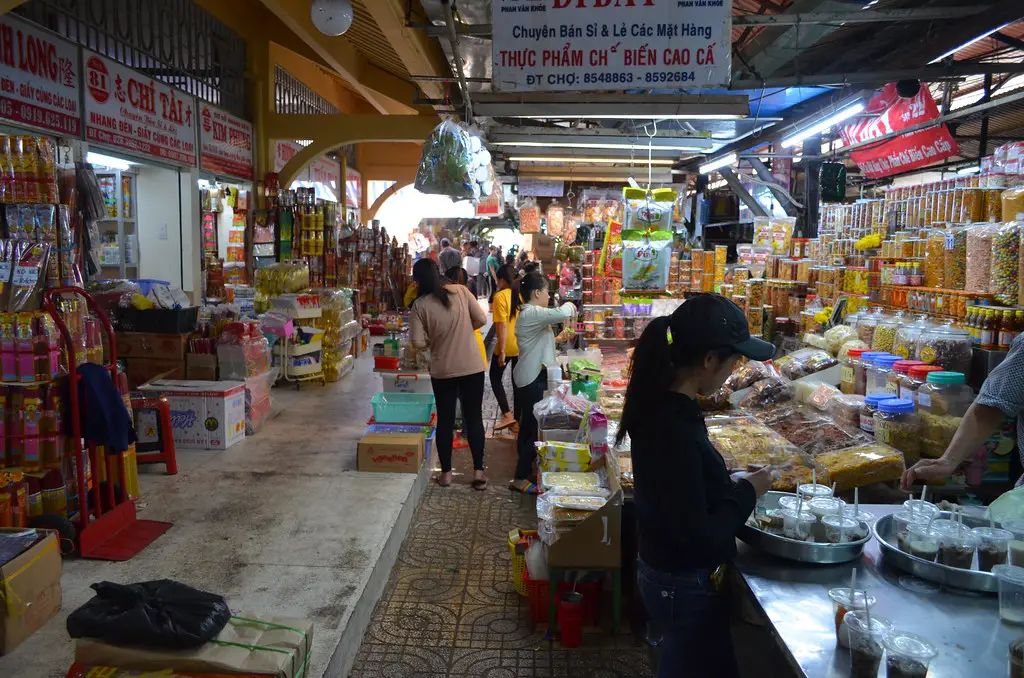
Binh Tay Market is a large indoor wholesale market in the center of Ho Chi Minh City, Vietnam.
What to see or do: Visitors can explore the market’s bustling aisles and shop for a wide variety of goods, including fresh produce, seafood, clothing, textiles, and souvenirs.
Don’t miss: Don’t miss the opportunity to sample some of the delicious street food stalls that surround the market, offering local delicacies such as banh mi, banh xeo, and pho.
Insider travel tips: – Bargaining is expected, so don’t be afraid to negotiate prices with vendors.
💪 Support independent web, support us: